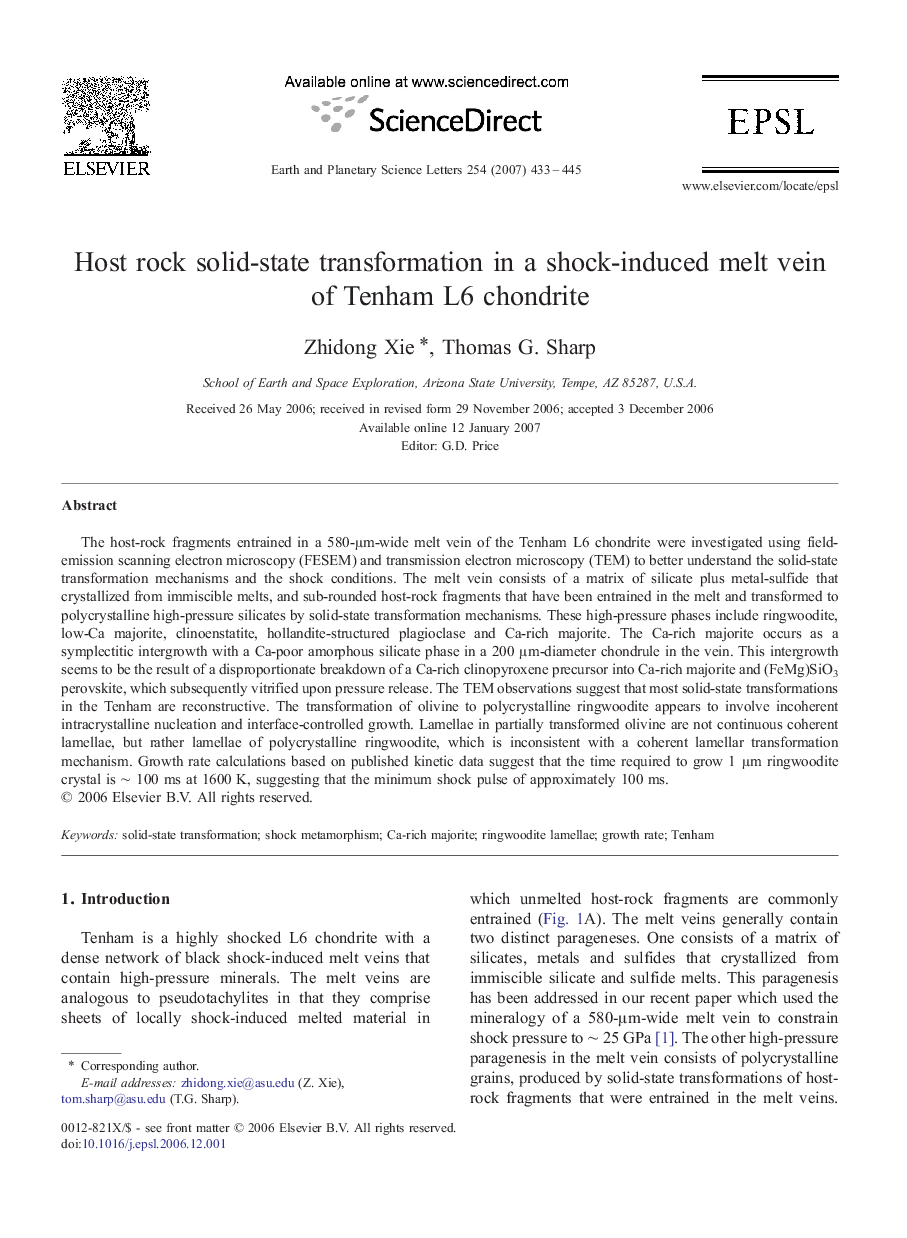| کد مقاله | کد نشریه | سال انتشار | مقاله انگلیسی | نسخه تمام متن |
|---|---|---|---|---|
| 4680536 | 1634926 | 2007 | 13 صفحه PDF | دانلود رایگان |

The host-rock fragments entrained in a 580-μm-wide melt vein of the Tenham L6 chondrite were investigated using field-emission scanning electron microscopy (FESEM) and transmission electron microscopy (TEM) to better understand the solid-state transformation mechanisms and the shock conditions. The melt vein consists of a matrix of silicate plus metal-sulfide that crystallized from immiscible melts, and sub-rounded host-rock fragments that have been entrained in the melt and transformed to polycrystalline high-pressure silicates by solid-state transformation mechanisms. These high-pressure phases include ringwoodite, low-Ca majorite, clinoenstatite, hollandite-structured plagioclase and Ca-rich majorite. The Ca-rich majorite occurs as a symplectitic intergrowth with a Ca-poor amorphous silicate phase in a 200 μm-diameter chondrule in the vein. This intergrowth seems to be the result of a disproportionate breakdown of a Ca-rich clinopyroxene precursor into Ca-rich majorite and (FeMg)SiO3 perovskite, which subsequently vitrified upon pressure release. The TEM observations suggest that most solid-state transformations in the Tenham are reconstructive. The transformation of olivine to polycrystalline ringwoodite appears to involve incoherent intracrystalline nucleation and interface-controlled growth. Lamellae in partially transformed olivine are not continuous coherent lamellae, but rather lamellae of polycrystalline ringwoodite, which is inconsistent with a coherent lamellar transformation mechanism. Growth rate calculations based on published kinetic data suggest that the time required to grow 1 μm ringwoodite crystal is ∼ 100 ms at 1600 K, suggesting that the minimum shock pulse of approximately 100 ms.
Journal: Earth and Planetary Science Letters - Volume 254, Issues 3–4, 28 February 2007, Pages 433–445